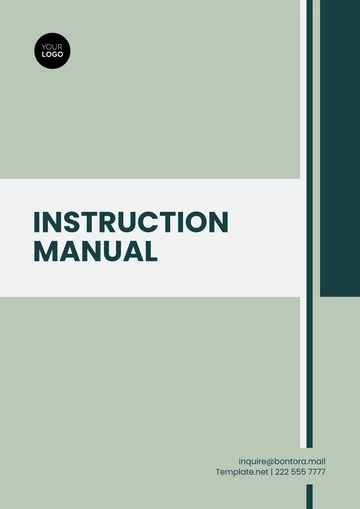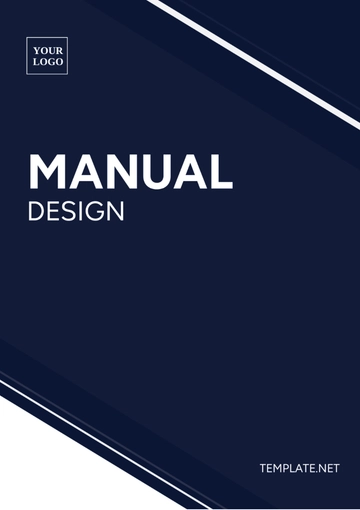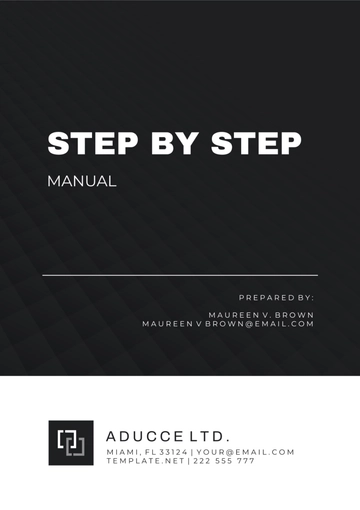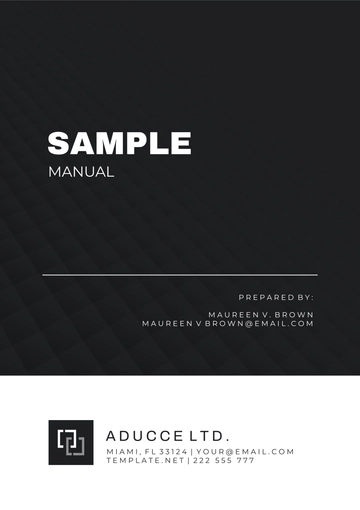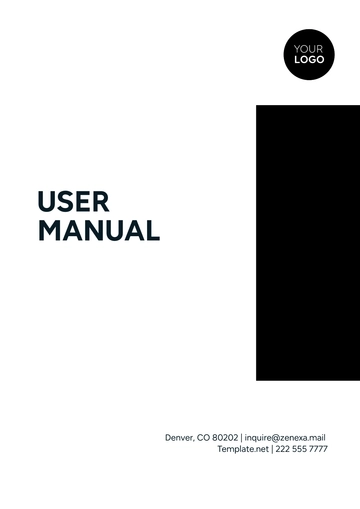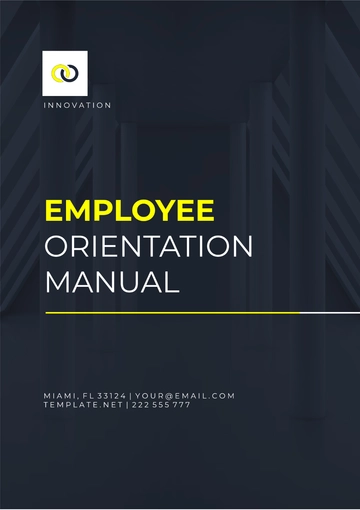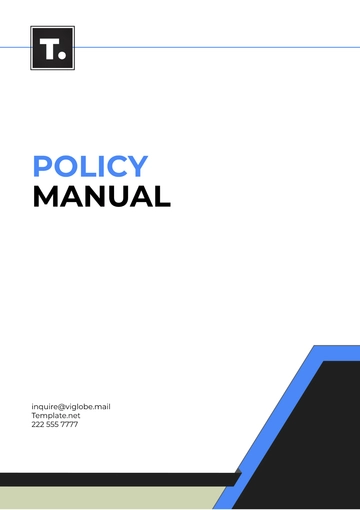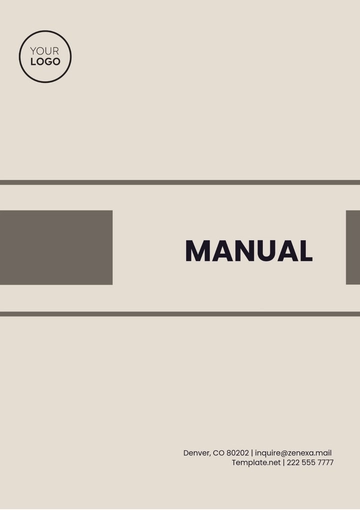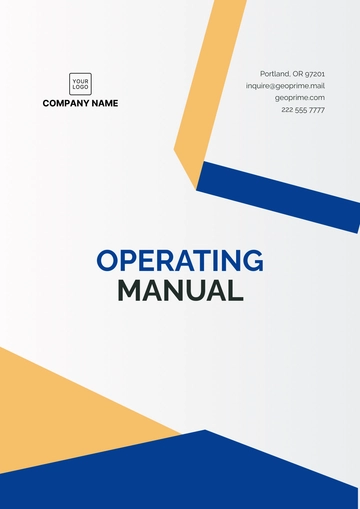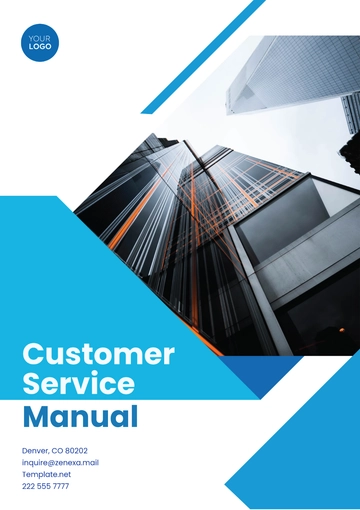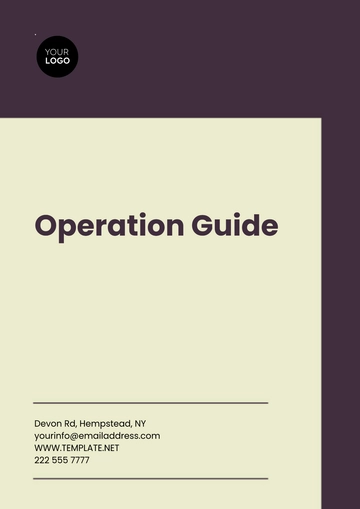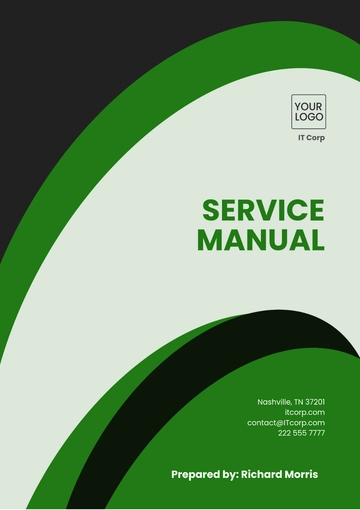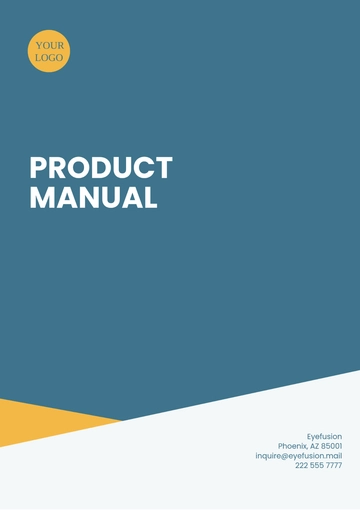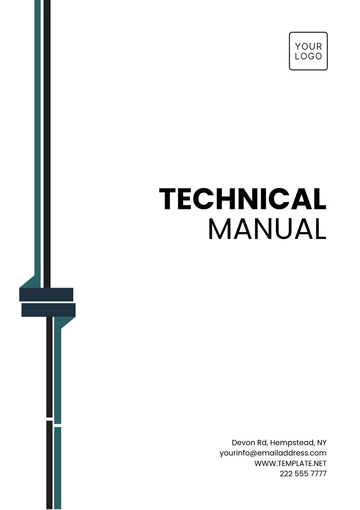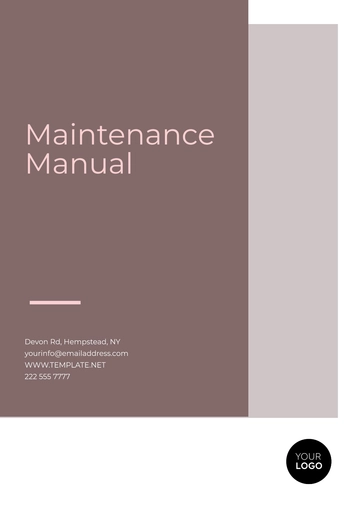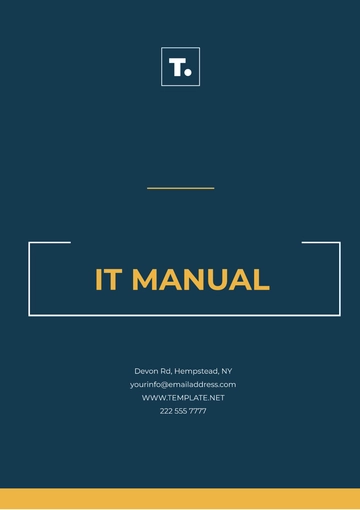Free Customized Training for Departments Manual HR
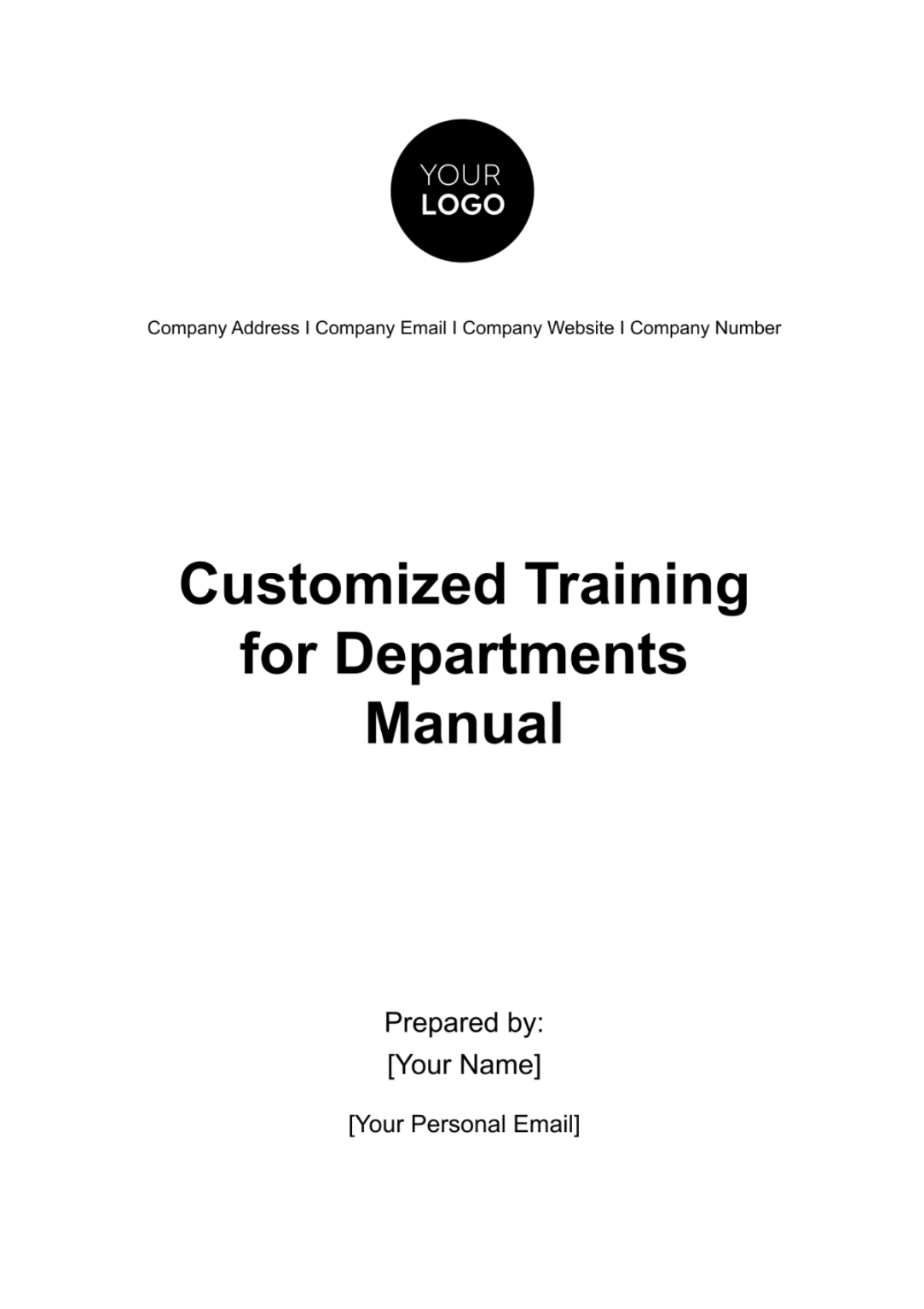
I. Introduction
Purpose of the Manual
Welcome to the Customer Support Training Manual. This comprehensive guide has been created to ensure that all members of our Customer Support Department receive the necessary training to excel in their roles. The manual covers essential information, skills, and processes required to provide top-notch customer service.
Department Overview
The Customer Support department is at the forefront of our organization, responsible for addressing customer inquiries, resolving issues, and ensuring a positive customer experience. This manual will equip you with the knowledge and skills needed to excel in this vital role.
Target Audience
This manual is intended for all Customer Support team members, including new hires and existing staff who require refresher training. It will also serve as a reference guide for ongoing improvement.
II. Departmental Goals and Objectives
Customer Support Mission
At the heart of our department's existence lies a profound commitment—to provide not just satisfactory, but exceptional customer service. Our mission transcends the transactional nature of support; it's about creating meaningful interactions that go beyond mere issue resolution. We aspire to exceed customer expectations and leave them with an indelible impression of our dedication to their satisfaction. In essence, our mission is to be the embodiment of reliability, empathy, and competence in every customer interaction, ultimately building enduring relationships that foster unwavering customer loyalty.
Key Performance Indicators (KPIs)
In our relentless pursuit of excellence, we rely on Key Performance Indicators (KPIs) to gauge our progress and ensure we are on the path to achieving our mission. These KPIs serve as the compass guiding our actions and decisions:
Average Response Time: Timeliness is a cornerstone of our service. We aim to respond promptly to customer inquiries, demonstrating our commitment to their needs.
First Contact Resolution Rate: We understand the value of resolving issues on the first interaction. A high First Contact Resolution Rate not only saves time and resources but also showcases our competence and efficiency.
Customer Satisfaction Scores: The ultimate litmus test of our success is the satisfaction of our customers. Their feedback, measured through satisfaction scores, shapes our service improvements and validates our mission.
Ticket Closure Rate: Closing tickets in a timely manner signifies our dedication to issue resolution. An efficiently managed ticket system reflects our commitment to customer care.
Knowledge Base Utilization: Our knowledge base is a treasure trove of information that empowers both customers and our team. Utilizing it effectively enhances our ability to provide accurate and efficient solutions.
Customer Satisfaction Goals
Our pursuit of excellence extends to our customer satisfaction goals. These goals serve as a constant reminder of our commitment to delivering outstanding service:
Maintain a Customer Satisfaction Rating of 90% or Higher: We set the bar high because we believe in our ability to consistently deliver exceptional service. Our aim is not merely to meet expectations but to exceed them. We strive for customer satisfaction ratings of 90% or higher, which is a testament to our unwavering dedication to customer delight.
Consistent and Effective Service Delivery: Our goal is not just about achieving a high satisfaction rating on occasion, but rather, it's about maintaining this level of excellence consistently. Every interaction is an opportunity to reaffirm our commitment to our mission and goals.
Continuous Improvement: Achieving and maintaining high customer satisfaction requires a commitment to continuous improvement. We actively seek out feedback, analyze it, and use it to refine our processes and skills. We embrace change and innovation as drivers of improved service delivery.
Proactive Issue Resolution: Beyond resolving issues as they arise, we aim to proactively identify potential problems and address them before they impact our customers. By anticipating needs and providing preemptive solutions, we strengthen customer trust and satisfaction.
III. Role of Customer Support
Responsibilities
In the role of a Customer Support team member, you will be responsible for a range of crucial duties that directly impact our customers' satisfaction and overall experience. These responsibilities include:
Responding to Customer Inquiries: | Promptly and effectively addressing customer inquiries, whether they come in via phone, email, or chat. Your ability to provide accurate and helpful information is vital to our customers' trust. |
Troubleshooting and Issue Resolution: | Skillfully identifying and resolving customer issues and concerns. Your problem-solving abilities will be instrumental in turning customer challenges into opportunities for satisfaction. |
Providing Product and Service Information: | Offering comprehensive information about our products and services to help customers make informed decisions. Your knowledge and clarity will empower customers to choose the right solutions. |
Escalating Complex Issues: | Recognizing when a customer's issue requires escalation to higher-tier support or specialized teams. Your judgment in escalating cases ensures that even the most challenging problems receive the attention they deserve. |
Maintaining Accurate Records: | Diligently documenting all customer interactions, including inquiries, issues, and resolutions. This record-keeping is essential for tracking customer history and improving our service. |
Key Duties
In addition to your core responsibilities, there are key duties that define your role as a Customer Support professional and contribute to our company's success. These duties include:
Being the Customer's Advocate: | You are the voice of our customers within the company. Your role is to champion their needs, concerns, and feedback to ensure their perspective is considered in decision-making processes. |
Ensuring a Seamless Experience: | Striving to provide customers with a seamless and hassle-free experience when they interact with our company. This includes making their journey from inquiry to resolution as smooth as possible. |
Identifying Improvement Opportunities: | Actively identifying and reporting product or service improvement opportunities based on the feedback and pain points shared by customers. Your insights are invaluable in refining our offerings. |
Collaborating Across Departments: | Collaborating with other departments, such as Product Development and Sales, to resolve customer issues that require cross-functional solutions. Your ability to work collaboratively contributes to a holistic approach to customer satisfaction. |
Interaction Guidelines
To provide exceptional customer service, it's important to follow specific interaction guidelines that ensure professionalism, empathy, and effective communication. Here are the key principles to guide your customer interactions:
Maintain a Professional and Empathetic Tone: Regardless of the situation, always maintain a professional and empathetic tone in your communication. This conveys respect and understanding, even in challenging circumstances.
Listen Actively and Patiently: Practice active listening by giving your full attention to the customer. Allow them to express their concerns fully before responding. Patience demonstrates that you genuinely care about their issues.
Seek Clarification When Necessary: If a customer's request or concern is unclear, don't hesitate to seek clarification. This ensures that you fully understand their needs and can provide an appropriate response.
Keep Personal Biases Out of Interactions: Customer support requires impartiality. Regardless of personal beliefs or biases, treat all customers fairly and equally. Every customer deserves respect and assistance.
IV. Product and Service Knowledge
Understanding Our Products and Services
Having an in-depth understanding of our product portfolio is crucial for providing exceptional customer support. Here's what it entails:
Product Portfolio Mastery: Customer Support team members must become experts in our entire product range. This includes not only knowing the specifications but also understanding how each product solves our customers' problems.
Service Offerings and Pricing Knowledge: Familiarity with our service offerings and pricing structures is essential. This knowledge allows you to guide customers in selecting the right solutions and providing accurate information about costs.
Effective Product Communication: The ability to explain product features and benefits clearly is paramount. You should be able to articulate how our products meet customer needs and the advantages they bring.
Keeping Up-to-Date
To ensure you stay current with our products and services, you should:
Regularly Review Product Updates and Changes: Our products are continually evolving to meet market demands. It's your responsibility to stay informed about these updates and how they might impact customers. Make it a habit to review release notes and product change logs.
Attend Product Training Sessions: We offer regular training sessions designed to keep you up-to-date with product enhancements and changes. Attend these sessions to deepen your product knowledge and receive hands-on training.
Utilize Internal Resources and Knowledge Base: Our company provides a wealth of internal resources and a comprehensive knowledge base. Use these tools to find answers to common questions, access product documentation, and stay informed about best practices in customer support.
V. Communication Skills
Effective Communication Techniques
Effective communication is the cornerstone of excellent customer support. To ensure that our interactions with customers are both productive and satisfying, it's crucial to employ the following techniques:
Clear and Concise Verbal and Written Communication: Strive for clarity and simplicity in your communication. Avoid jargon or technical language that the customer may not understand. Be concise and to the point, conveying information clearly.
Use Positive and Solution-Oriented Language: Maintain a positive and solution-focused approach in all your communications. Instead of dwelling on problems, emphasize potential solutions and a willingness to assist. For example, say, "We can resolve this issue by..." rather than "There's nothing we can do."
Tailor Communication Style to Customer Needs: Recognize that each customer is unique and may have different communication preferences. Adapt your tone, language, and level of formality to align with the customer's style. Be empathetic and patient when needed, and more direct and brief when appropriate.
Active Listening
Active listening is a fundamental skill that enhances our ability to understand and address customer concerns effectively. Here are the key components of active listening:
Pay Full Attention to the Customer: Give the customer your undivided attention. Avoid distractions and multitasking during conversations. Show that you value their input by focusing on what they are saying.
Ask Clarifying Questions: To ensure you fully grasp the customer's issue, ask clarifying questions. These questions should seek to gather additional details or context that might be relevant to finding a resolution. For example, ask, "Can you provide more information about when this issue first occurred?"
Reflect on Customer Feedback: After the customer has expressed their concerns, take a moment to summarize and reflect on their feedback. This demonstrates that you've been actively listening and are committed to addressing their needs. You can say, "I understand that you're frustrated with the delay in your delivery, and I'm here to help resolve this."
Conflict Resolution
Conflict can arise in customer interactions, but it's how we handle these situations that defines the quality of our service. Follow these steps for effective conflict resolution:
Stay Calm and Composed: In emotionally charged situations, it's essential to remain calm and composed. Take deep breaths and maintain a respectful and professional demeanor. This will help de-escalate tension and create a more positive atmosphere.
Acknowledge the Issue: Begin by acknowledging the customer's concerns and expressing understanding. Let them know that you recognize the problem and are committed to finding a resolution. For instance, say, "I understand that you're frustrated, and I apologize for any inconvenience."
Offer Solutions and Alternatives: After acknowledging the issue, present practical solutions or alternatives to address the customer's problem. Ensure that the options you propose align with the customer's needs and expectations. For example, "To resolve this, we can offer a refund or expedite the delivery at no additional cost. Which option would you prefer?"
VI. Technical Skills
Using CRM Software
Mastering CRM Navigation:
Gain proficiency in navigating the CRM interface with ease.
Understand the layout, menus, and key features for efficient use.
Data Entry and Maintenance:
Ensure the accuracy and completeness of data entered into the CRM.
Regularly update customer information, interactions, and ticket status.
Maintain data integrity by adhering to established protocols.
Ticket Creation and Management:
Learn how to create new support tickets accurately.
Assign tickets to the appropriate team members or departments.
Monitor and manage the lifecycle of tickets from creation to resolution.
Automation and Workflows:
Understand the CRM's automation capabilities to streamline tasks.
Learn how to create workflows to automate repetitive processes.
Utilize automated responses for common customer queries.
Troubleshooting Common Issues
In this section, we will equip you with the skills necessary to identify and resolve common customer issues effectively.
Skill Area | Key Learning Points |
Recognize Common Problems and Their Solutions: |
|
Follow Troubleshooting Protocols: |
|
Document Solutions for Future Reference: |
|
Automation and Workflows: |
|
Customer Support Processes
Ticket Management
The depicted flowchart outlines the ticket management process, starting with the creation of a ticket, denoted by the "Create Ticket" rectangle. Subsequently, tickets are assigned and prioritized in the "Assign and Prioritize Ticket" step. The decision point "Is Ticket Ready for Closure?" determines whether a ticket can be closed based on specific criteria. If the ticket is ready for closure (Yes), it proceeds to "Inform Customer of Ticket Status" to keep the customer informed. Another decision point, "Customer Confirmation Received?" assesses if the customer has confirmed the ticket closure; if yes, the ticket proceeds to "Close Ticket," marking its closure. The process concludes at the "End" oval. This flowchart offers a structured visualization of the ticket management workflow within the organization.
Escalation Procedures
In the event of unresolved issues, it is imperative to adhere to our established escalation procedures. This involves carefully documenting the reasons for escalation and maintaining effective communication with the designated escalation team.
Reporting and Documentation
In reporting and documentation, it is imperative to meticulously record customer interactions, compile reports highlighting crucial performance metrics, and actively disseminate valuable insights and emerging trends among the team.
VIII. Teamwork and Collaboration
Collaborative Tools
Utilize collaboration tools (e.g., Slack, Microsoft Teams) effectively.
Share knowledge and best practices with colleagues.
Seek assistance and offer support when needed.
Team Meetings
Attend and actively participate in team meetings.
Provide input on process improvements.
Discuss customer feedback and success stories.
Interdepartmental Communication
Foster positive relationships with other departments.
Communicate customer feedback and product issues to relevant teams.
Collaborate on cross-functional projects as required.
IX. Self-Development
Continuous Learning
Identify areas for improvement.
Attend relevant training sessions.
Seek feedback for personal growth.
Professional Growth Opportunities
Explore career advancement within the department.
Participate in mentorship programs.
Set personal development goals.
X. Conclusion
Feedback and Improvement
We encourage all Customer Support team members to provide feedback on this manual and suggest improvements. Your insights are valuable in ensuring that this training resource remains effective and up-to-date.
Resources and Contacts
For any questions, clarifications, or assistance related to this training manual, please reach out to:
Human Resources Administrative Director
[Your Name]
HR Admin Director
[Your Email]
- 100% Customizable, free editor
- Access 1 Million+ Templates, photo’s & graphics
- Download or share as a template
- Click and replace photos, graphics, text, backgrounds
- Resize, crop, AI write & more
- Access advanced editor
Unlock the potential of your workforce with Template.net's Customized Training for Departments Manual HR Template. Editable and customizable, it empowers HR teams to tailor training materials effortlessly. Seamlessly edit online using our AI Editor Tool, ensuring precise alignment with your department's unique needs. Elevate employee development with ease and efficiency.
